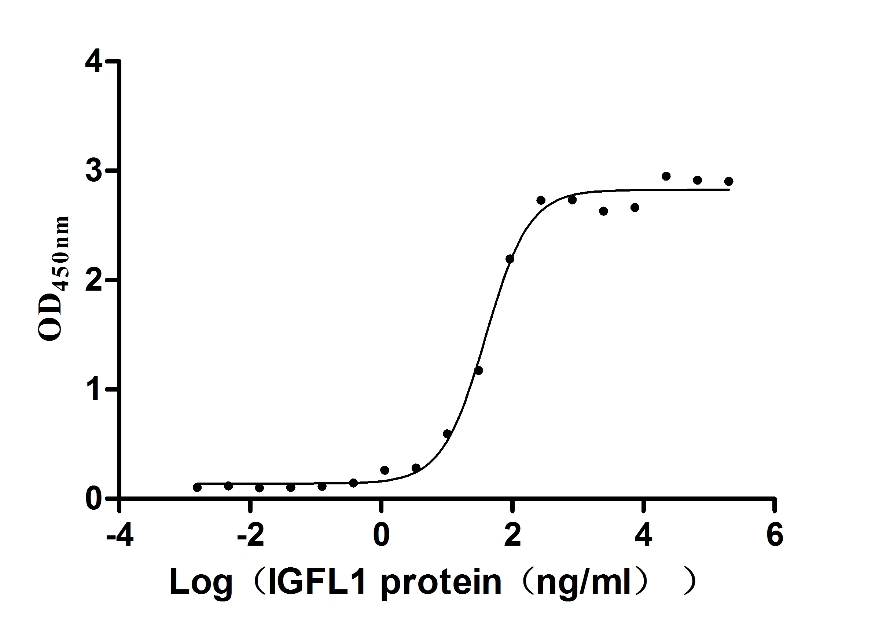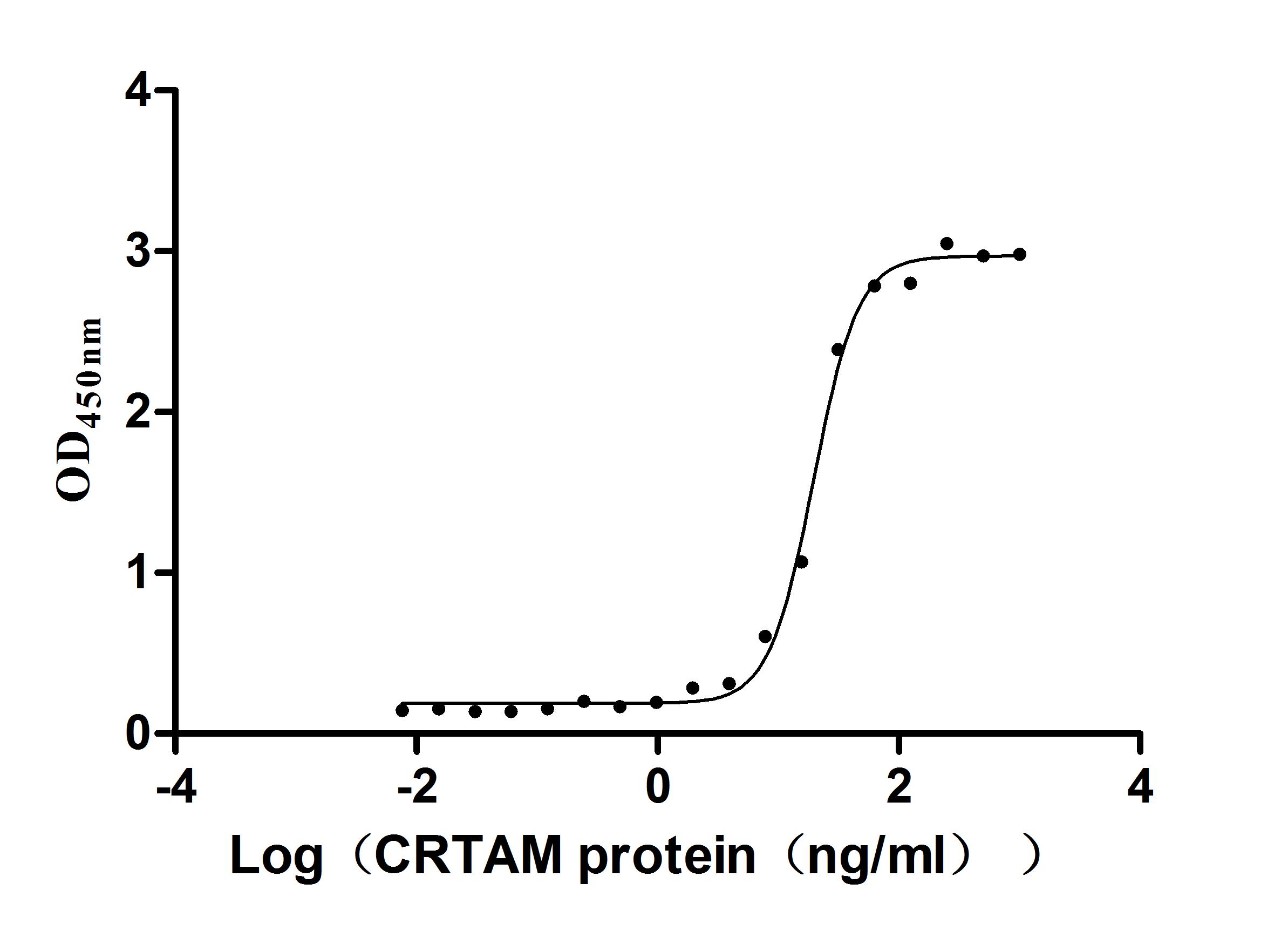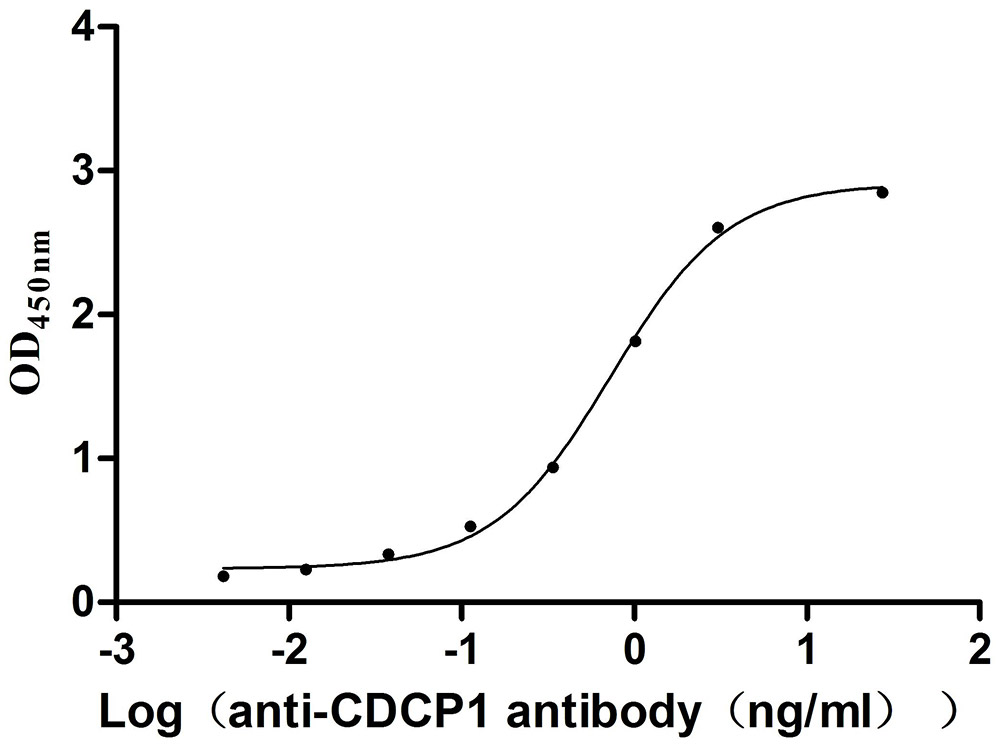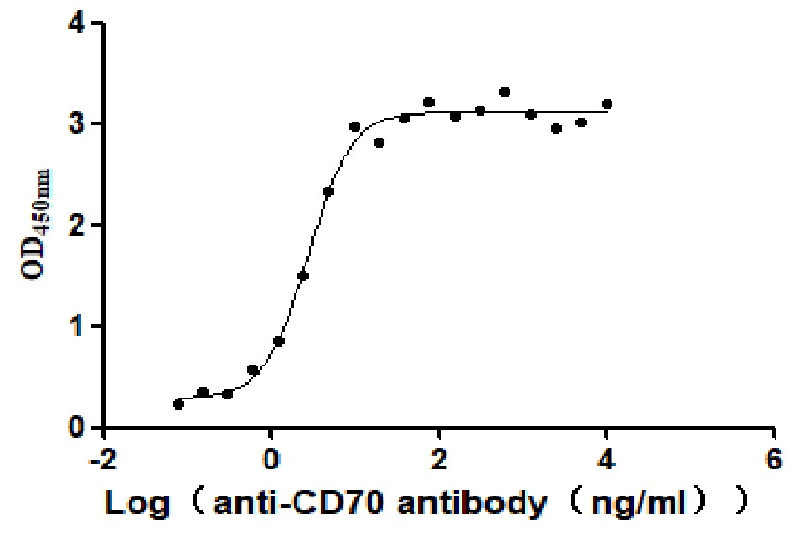Recombinant Mouse Serine/threonine-protein kinase pim-2 (Pim2)
-
中文名稱:小鼠Pim2重組蛋白
-
貨號(hào):CSB-YP717248MO
-
規(guī)格:
-
來(lái)源:Yeast
-
其他:
-
中文名稱:小鼠Pim2重組蛋白
-
貨號(hào):CSB-EP717248MO
-
規(guī)格:
-
來(lái)源:E.coli
-
其他:
-
中文名稱:小鼠Pim2重組蛋白
-
貨號(hào):CSB-EP717248MO-B
-
規(guī)格:
-
來(lái)源:E.coli
-
共軛:Avi-tag Biotinylated
E. coli biotin ligase (BirA) is highly specific in covalently attaching biotin to the 15 amino acid AviTag peptide. This recombinant protein was biotinylated in vivo by AviTag-BirA technology, which method is BriA catalyzes amide linkage between the biotin and the specific lysine of the AviTag.
-
其他:
-
中文名稱:小鼠Pim2重組蛋白
-
貨號(hào):CSB-BP717248MO
-
規(guī)格:
-
來(lái)源:Baculovirus
-
其他:
-
中文名稱:小鼠Pim2重組蛋白
-
貨號(hào):CSB-MP717248MO
-
規(guī)格:
-
來(lái)源:Mammalian cell
-
其他:
產(chǎn)品詳情
-
純度:>85% (SDS-PAGE)
-
基因名:Pim2
-
Uniprot No.:
-
別名:Pim2; Pim-2; Serine/threonine-protein kinase pim-2; EC 2.7.11.1
-
種屬:Mus musculus (Mouse)
-
蛋白長(zhǎng)度:full length protein
-
表達(dá)區(qū)域:1-370
-
氨基酸序列MARATNLNAA PSAGASGPPD SLPSTLAPPS PGSPAALPRA STPCGLSGFS GLNIRSTSSM LTKPLQGHPS PPVTPTQPPG GKDRAAFEAE YRLGPLLGKG GFGTVFAGHR VTDRRQVAIK VISRNRVLGW STVSDSVTCP LEVALLWKVG EGNGHPGVIR LLDWFETPEG FMLVLERPMP AQDLFDYITE KGPLGESCSR SFFTQVVAAV QHCHARGVVH RDIKDENILI DLCRGSIKLI DFGSGALLHD EPYTDFDGTR VYSPPEWISR HQYHALPATV WSLGVLLYDM VCGDIPFERD QEILEAELHF PAHVSPDCCA LIRRCLAPKP CSRPSLEEIL LDPWMQSPAE EKPINSSKGS PTPLPWSLLP
-
蛋白標(biāo)簽:Tag?type?will?be?determined?during?the?manufacturing?process.
The tag type will be determined during production process. If you have specified tag type, please tell us and we will develop the specified tag preferentially. -
產(chǎn)品提供形式:Lyophilized powder
Note: We will preferentially ship the format that we have in stock, however, if you have any special requirement for the format, please remark your requirement when placing the order, we will prepare according to your demand. -
復(fù)溶:We recommend that this vial be briefly centrifuged prior to opening to bring the contents to the bottom. Please reconstitute protein in deionized sterile water to a concentration of 0.1-1.0 mg/mL.We recommend to add 5-50% of glycerol (final concentration) and aliquot for long-term storage at -20℃/-80℃. Our default final concentration of glycerol is 50%. Customers could use it as reference.
-
儲(chǔ)存條件:Store at -20°C/-80°C upon receipt, aliquoting is necessary for mutiple use. Avoid repeated freeze-thaw cycles.
-
保質(zhì)期:The shelf life is related to many factors, storage state, buffer ingredients, storage temperature and the stability of the protein itself.
Generally, the shelf life of liquid form is 6 months at -20°C/-80°C. The shelf life of lyophilized form is 12 months at -20°C/-80°C. -
貨期:Delivery time may differ from different purchasing way or location, please kindly consult your local distributors for specific delivery time.Note: All of our proteins are default shipped with normal blue ice packs, if you request to ship with dry ice, please communicate with us in advance and extra fees will be charged.
-
注意事項(xiàng):Repeated freezing and thawing is not recommended. Store working aliquots at 4°C for up to one week.
-
Datasheet :Please contact us to get it.
靶點(diǎn)詳情
-
功能:Proto-oncogene with serine/threonine kinase activity involved in cell survival and cell proliferation. Exerts its oncogenic activity through: the regulation of MYC transcriptional activity, the regulation of cell cycle progression, the regulation of cap-dependent protein translation and through survival signaling by phosphorylation of a pro-apoptotic protein, BAD. Phosphorylation of MYC leads to an increase of MYC protein stability and thereby an increase of transcriptional activity. The stabilization of MYC exerted by PIM2 might explain partly the strong synergism between these 2 oncogenes in tumorigenesis. Regulates cap-dependent protein translation in a mammalian target of rapamycin complex 1 (mTORC1)-independent manner and in parallel to the PI3K-Akt pathway. Mediates survival signaling through phosphorylation of BAD, which induces release of the anti-apoptotic protein Bcl-X(L)/BCL2L1. Promotes cell survival in response to a variety of proliferative signals via positive regulation of the I-kappa-B kinase/NF-kappa-B cascade; this process requires phosphorylation of MAP3K8/COT. Promotes growth factor-independent proliferation by phosphorylation of cell cycle factors such as CDKN1A and CDKN1B. Involved in the positive regulation of chondrocyte survival and autophagy in the epiphyseal growth plate.
-
基因功能參考文獻(xiàn):
- studies define a pathway for limiting the regulation of Foxp3 function because the Pim-2 kinase represents a potential therapeutic target for modulating the Treg cell suppressive activities in controlling immune responses PMID: 25987564
- Pim2 facilitated allograft rejection primarily by modulating the apoptosis of effector T cells and the function of regulatory T cells. PMID: 23085945
- Loss of PIM2 is associated with abnormal hematopoietic phenotypes. PMID: 23360755
- signals from IL-7 and RAG DSBs activate distinct Pim kinase family members that have context-dependent activities in regulating pre-B cell proliferation and survival. PMID: 22201128
- results support the hypothesis that Pim2, which is also a known target of Flt3-ITD (another gene that cooperates with PML-RARalpha), cooperates with PRalpha to induce acute promyelocytic leukemia-like disease PMID: 20215640
- Pim-2 is a direct link between growth factor-induced transcription and a novel, kinase-dependent pathway that promotes cell-autonomous survival PMID: 12869584
- pim-2 functions similarly to pim-1 as a pro-survival kinase; BAD is a legitimate PIM-2 substrate PMID: 12954615
- Pim-2 and Akt-1 are critical components of overlapping but independent pathways, either of which is sufficient to promote the growth and survival of nontransformed hematopoietic cells PMID: 15705789
- PIM-2 regulates a new intermediate stage in the differentiation pathway, the induction of autophagy. PMID: 17476689
- BLyS stimulation activates 2 independent signaling pathways, Akt/mTOR and Pim 2, associated with cell growth and survival. PMID: 17942753
- Overexpression of Pim2 together with Flt3-Wt or D835Y receptor is associated with neoplastic transformation PMID: 17943165
- Invitro transcription/translation, site-directed mutagenesis, and immunoprecipitation studies described here, show that translation initiates at three different start sites, with the two major upstream sites initiating at non-AUG (CUG) codons. PMID: 7781606
顯示更多
收起更多
-
蛋白家族:Protein kinase superfamily, CAMK Ser/Thr protein kinase family, PIM subfamily
-
組織特異性:Widely expressed, with highest expression in spleen, thymus and brain. Expressed in epiphyseal chondrocytes.
-
數(shù)據(jù)庫(kù)鏈接:
Most popular with customers
-
Recombinant Human Insulin growth factor-like family member 1 (IGFL1) (Active)
Express system: Mammalian cell
Species: Homo sapiens (Human)
-
Recombinant Human Cell adhesion molecule 1 (CADM1), partial (Active)
Express system: Mammalian cell
Species: Homo sapiens (Human)
-
Recombinant Mouse CUB domain-containing protein 1 (Cdcp1), partial (Active)
Express system: Mammalian cell
Species: Mus musculus (Mouse)
-
Recombinant Human CD70 antigen (CD70), partial (Active)
Express system: Mammalian cell
Species: Homo sapiens (Human)
-
Recombinant Human Tumor necrosis factor ligand superfamily member 15(TNFSF15) (Active)
Express system: Mammalian cell
Species: Homo sapiens (Human)






-AC1.jpg)









